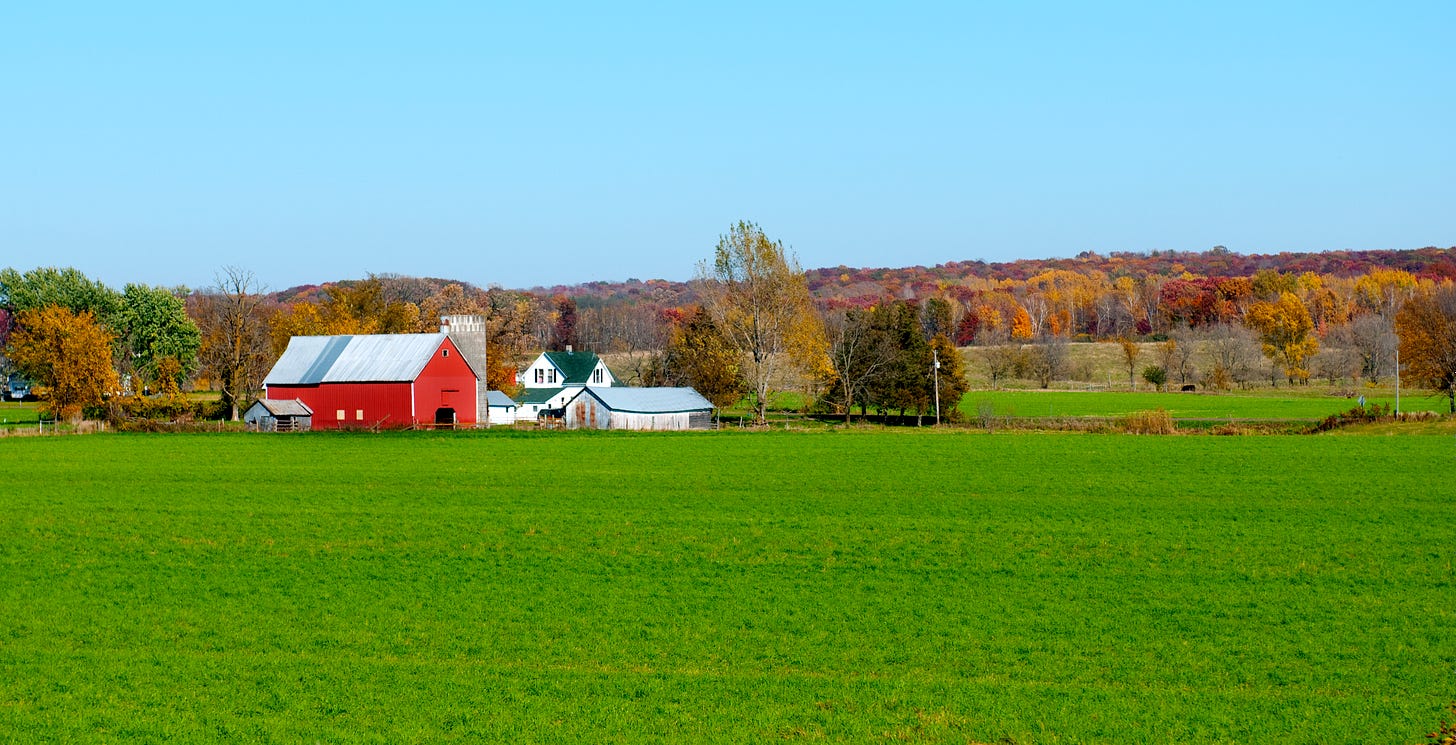Forget about Old Mc Donald. Farmland is now an asset class! Ordinary, retail investors with $10,000, or - in the case of crowdfunding- less, can take advantage of innovative financial instruments, and do what used to be available only to multimillionaires, invest in farmland.
The trappings of the finance world in selling this asset class are apparent. You could read The Motley Fool’s (April 2021) Real Estate Investor’s Guide to Investing in Farmland. Or you could register for an investors’ conference at “a prestigious club” where you could join the conference “kick off with an exclusive golf tournament”. At this conference you would hear a sales pitch that was pure finance speak.
My question is: “Does farmland as asset class bode well for regeneration of the land? Does it mean that regenerative agriculture will get the infusion of capital it needs to scale up? Or does ownership of farmland by investors, not farmers, mean a slide into colonialism, chemical inputs, and GMOs?
When I think of regenerative agriculture I think of Jane. Jane is a smallholder farmer, using regenerative agriculture methods, like no till and cover crops. She farms 3 acres, growing a variety of vegetables that she sells to local restaurants and farmers’ markets. She gets a premium price for her produce because of the heirloom varieties she cultivates and because of her dedication to soil health, and organic certification.
Jane needs a loan to expand her acreage and purchase equipment. Jane may turn to crowd funder, GoSteward, for a loan or to the Perennial Fund. GoSteward pools money from investors, and loans it to regenerative ag farms, ranches, fisheries and product producers. Their pitch to potential investor/lenders is values first, then finance:
Support sustainable agriculture. All money invested goes to supporting the loan.
Get your principal back plus interest. (The same interest rate as the farmer pays).
When I think of regenerative agriculture, I do not think about Joe. Joe is comfortable financially and is refining his financial portfolio with investment in farmland. He has a choice of companies that can facilitate his acquisition. Companies, like Farmtogether, or Acretrader in the USA, or Bonnefield or Veripath Partners in Canada, that acquire farmland acres, then pitch and sell shares of them to investors.
The sales pitch to Joe is pure finance, relying on traditional investment language:
· Historic returns to investors are good and better than other investment possibilities (more than 11% between 1999 and 2019.) (Moneywise) “That’s better than traditional real estate, better than bonds and gold – it’s even better than the stock market, which over the same period grew by 9.6%).
· Note: USDA reports that farmland values vary by region, with some locations increasing in value and others losing value.
· Farmland is uncorrelated with other investments, like stocks and bonds, so it can balance an investment portfolio.
· Food is a growing business.
We are at a turnover opportunity with 40% of farmers aged 65 or older, farmland is at a transition point. Many children of family-owned farms are not interested in farming as an occupation. This is a rare window of opportunity.
Note: The USDA reports that “A majority of U.S. land in farms is owner-operated—just over 60 percent, according to the 2017 Census of Agriculture. The national share of farmland that is owner-operated [60%] has been relatively stable over the past 50 years, with a noticeable decline during the farm crisis of the 1980s.”
· New platforms allow smallish investors to get in.
· Savvy investor, Bill Gates is doing it (investing in farmland).
· And, now that inflation is a worry, farmland investment is an inflation hedge.
Two villains, TIAA and Bill Gates, emerge when reading reports on the dark side of farmland investing. Opponents to farmland investing make two arguments. One is a principle, based on fear from a colonialist past, that bad things happen when the people who farm are not the owners of their land.
A protest at TIAA’s NYC headquarters in 2017 featured “Stop Land Grabbing” posters. These signs referred to TIAA’s $8 billion in land ownership in the US, Brazil, and Australia. One protester argued that TIAA should disclose “whether… land acquisition caused any sort of displacement for locals. “
The other argument against the ownership of farmland by investors, focuses on Bill Gates agricultural research company, AgOne, and the Gates Foundation??? work with smallholder, poor farmers (mostly women) in Africa. Protestors argue that AgOne’s “innovations” will impose chemical inputs, genetically modified crops, and data mining on farmers without their knowledge or consent.
So not all farmland investors are equal in their promise/prospects for scaling regenerative ag. Most of the farmland investment firms care about farmers and boast former farmers on staff. A few are knowledgeable about regenerative or organic farming.
A future post will separate the wheat from the chaff – so to speak. Who is on staff at these firms? Former Monsanto executives? Anyone who knows about regenag? Do they partner with soil or regenag specialist organizations? Or merely mention “sustainability” in their marketing material?? Watch this space.




